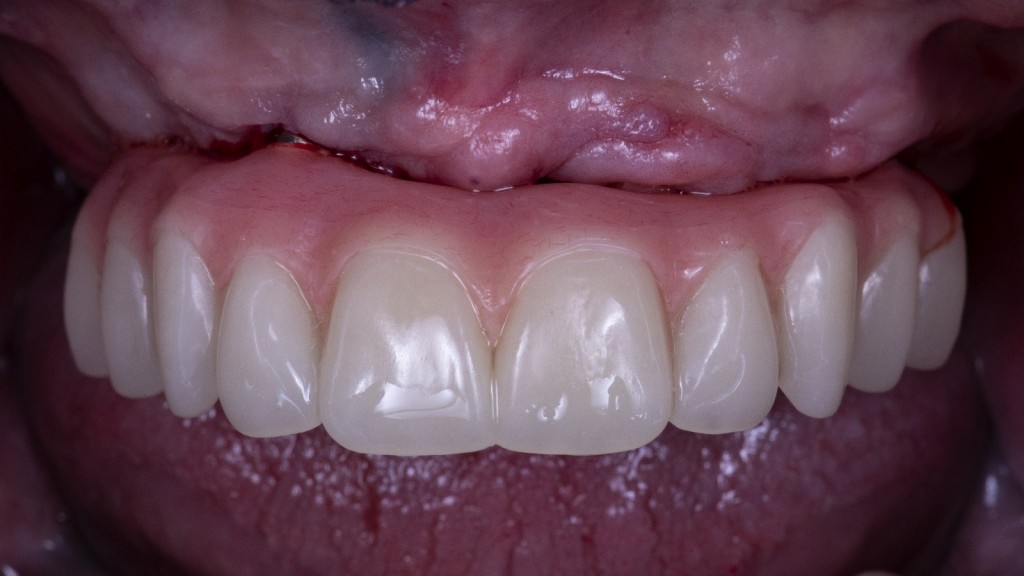…however before the surgery, my stent mysteriously disappeared 😓
and I had to perform the surgery blind 😬.
Well, actually it wasn’t really blind, because I could see the alveolar crest and its shape, and I knew that under the soft tissue layer was the bone, with the same shape but a bit smaller… ‘not such a big deal’ when you think about it 😉.
However, let’s start from the beginning: there are some cases of edentulism, quite rare to be honest, for which a flapless approach is definitely indicated. The characteristics of these cases are:
- A bone that is thick enough to allow implants to be placed within the bone structure without having to search for an adequate thickness by means of a partial osteotomy.
- A regular crest that allows one to make a totally convex prosthesis in its part in contact with the soft tissue and, consequently, adequately cleanable.
- Enough bone to place standard length implants in a standard position (I think it is obvious, and requires no explanation, that transinusal or zygomatic implants require a flap approach…).
- An appropriate amount of keratinized tissue, within which prosthetic connections can emerge.
All these conditions are necessary. In the absence of even one of them, a flapless approach will lead to a low-quality result. Moreover, I don’t give a damn if you can’t lift a flap, that is no justification for doing low quality work to patients. Either you learn how to lift flaps or you limit yourself to fillings, very simple🙆
However, as I said, there are some rare cases where a flapless approach is possible and can lead to an excellent result. Something I will never understand is the role of a digital surgical guide in these cases that, given the above conditions, are absolutely obvious and trivial to treat ‘blindly’. Everything ends up in doing the same surgery you did on the plastic model at the basic AO4 course organised by any implant company. Nothing more and nothing less.
I know that some of those reading are getting very pissed off because they do a lot of guided implantology and maybe even base their marketing and training on it or have business relationships with companies that produce the related material. However, I won’t say I’m sorry, because I really don’t care. I find this trend useless and uneducational for the youth. But as you know, I am very humble 😬, so I don’t exclude that I am absolutely wrong… it is possible that guided implantology is absolutely useful and you are right. I have not found this usefulness so far, but who knows… never say never!
Now I’ll leave you to the video, but first I’ll show you the fixed prosthesis delivered 4 hours after the ‘surgery’ (inverted commas are a must)…
See you soon!

